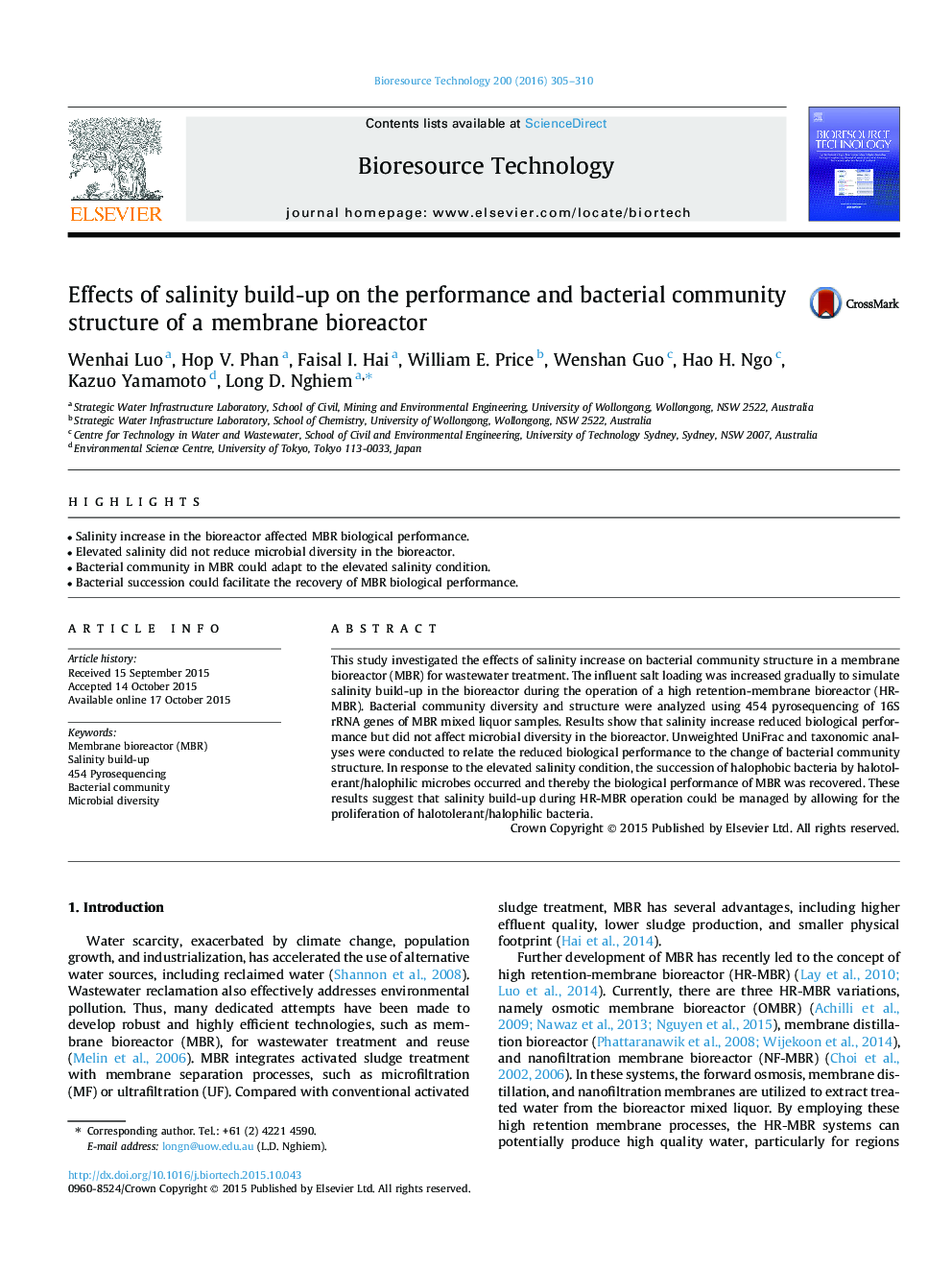| Article ID | Journal | Published Year | Pages | File Type |
|---|---|---|---|---|
| 7072602 | Bioresource Technology | 2016 | 6 Pages |
Abstract
This study investigated the effects of salinity increase on bacterial community structure in a membrane bioreactor (MBR) for wastewater treatment. The influent salt loading was increased gradually to simulate salinity build-up in the bioreactor during the operation of a high retention-membrane bioreactor (HR-MBR). Bacterial community diversity and structure were analyzed using 454 pyrosequencing of 16S rRNA genes of MBR mixed liquor samples. Results show that salinity increase reduced biological performance but did not affect microbial diversity in the bioreactor. Unweighted UniFrac and taxonomic analyses were conducted to relate the reduced biological performance to the change of bacterial community structure. In response to the elevated salinity condition, the succession of halophobic bacteria by halotolerant/halophilic microbes occurred and thereby the biological performance of MBR was recovered. These results suggest that salinity build-up during HR-MBR operation could be managed by allowing for the proliferation of halotolerant/halophilic bacteria.
Keywords
Related Topics
Physical Sciences and Engineering
Chemical Engineering
Process Chemistry and Technology
Authors
Wenhai Luo, Hop V. Phan, Faisal I. Hai, William E. Price, Wenshan Guo, Hao H. Ngo, Kazuo Yamamoto, Long D. Nghiem,
